The Ketubah: a Brief and Imperfect Background on Jewish Marriage Contracts
A ketubah is not just a piece of paper; it's a gorgeously-written document of the promises that a couple makes to one another on their wedding day, and serves as a reminder of their commitment for them and their families.
Choosing a ketubah will be one of the most exciting parts of wedding planning for many Jewish and interfaith couples. As a wedding rabbi who has seen dozens of ketubot and checked them for errors, I’m here to tell you that no two are exactly alike, but they’re all equally emotional.
Before we talk about choosing your own ketubah (in the next post!) let’s go over the history of this tradition, and how it’s grown and chnaged over the years.
**The Importance of Putting It in Writing**
“Ketubah” literally means, “It is written.” You might wonder why writing things down is such a big deal in Jewish culture. Well, think about the Torah, our sacred text. It's a written record of our history, beliefs, and traditions.
The Ketubah, like the Torah, shows us that putting things in writing holds immense importance. It’s not just a legal thing; by writing out the record of our promises to one another on the wedding day, we are signaling its seriousness and our expectation of how long-lasting the marriage will be.
A couple prepares to sign their ketubah as their rabbi looks on. Photo by Derk’s Works Photography, Columbus, OH.
The Ketubah is one of the oldest, continuously practiced traditions in Jewish history, spanning thousands of years.
One of the earliest known Ketubot, dates back to around 440 BCE. It's written in Aramaic, the spoken language of the time. It was important that legal documents be written in a language that their signers could understand.
**Equality in Ancient Ketubot**
What's truly remarkable is that in these early Ketubot, women’s rights were clearly articulated and very well protected. They could own property, initiate a divorce, and were entitled to financial security and protection within their marriage.
**Early Innovations in Ketubot**
As we delve deeper into history, we find early innovations in the Ketubah. While they might have been influenced by Persian or Babylonian law, they found a home in Jewish marriage documents. These innovations emphasized respect and the autonomy of individuals in a relationship
**Looking Out for the Bride**
The core purpose of the Ketubah has always been to safeguard the bride's future and ensure her well-being. Even in ancient times, this document was all about taking care of her.
**The Evolution of the Ketubah**
Just like many traditions, the Ketubah has evolved over time. In its earliest form, it was more symbolic, representing the bride price known as "mohar." But it evolved over the decades and centuries, as all customs do.
**The Era of Dowries**
As we head into the late biblical period, we see more men staying unmarried. That's when Ketubot started to include dowries – money, valuables, and even livestock brought by the bride to make their new home even more special. Mostly, though, it was to make it more enticing for a man to marry her - and more difficult for them to divorce. There is much debate among rabbis and scholars over whether this made the ketubah an essentially more or less feminist document.
**The Talmudic Era and Emotional Promises**
In the Talmudic era, Ketubot began to include emotional promises. These were about honoring, supporting, and feeding one's spouse according to Jewish customs. Marriage became more than a financial transaction; it was about love and respect, and came with the assumption of a lifelong dedication to one another despite any life circumstances - much like it is today.
**The Value of Money in the Ketubah**
The value of the dowry specified in Ketubot has changed over time. For instance, 200 silver "zuzim" meant something different in the past than it does today. There are authorities who believe that this amount is merely symbolic today; others say it should be adjusted for inflation. Regardless, the majority of Jewish couples who end up divorcing do not solely use the ketubah to determine alimony and other financial issues.
**The Essence of the Ketubah**
At the heart of every Ketubah is a legal statement that includes the word "acquisition." A lot of people flinch over this. I know that I personally have explained it wrong in the past. It's not about treating the bride as property. It's about the groom proving that he is capable and dedicated enough to this woman and to provide for his wife for the foreseeable future. He has acquired the right to enter into this adult relationship with her; this is proof that they are ready to take responsibility for one another, instead of remaining under their parents’ jurisdiction.
**Artistic Touches**
In the medieval period, Ketubot became artistic marvels. They were adorned with intricate artwork that reflected the couple's values and beliefs, making each one a unique work of art.
**Cultural Diversity**
Ketubot have always been a mirror of regional and cultural styles and customs. From art styles to additions of poetry and even the font in which they were written, we can clearly see how fashionable Jewish couples designed their ketubot stretching back hundreds of years.
**Today's Considerations**
Today, after a brief period of afterthought, fill-in-the-blank ketubot in the 18 and 1900s, ketubot come in all shapes and sizes.
Choosing a ketubah is often one of the most exciting parts of wedding planning for a couple. These gorgeous pieces of art play a crucial role in Jewish weddings, symbolizing commitment, the couple’s values, and the lives they’re excited to share.
In the next post, we’ll talk about Ketubah considerations for 21st-century couples. Until then, remember, there’s always more learning to do.


